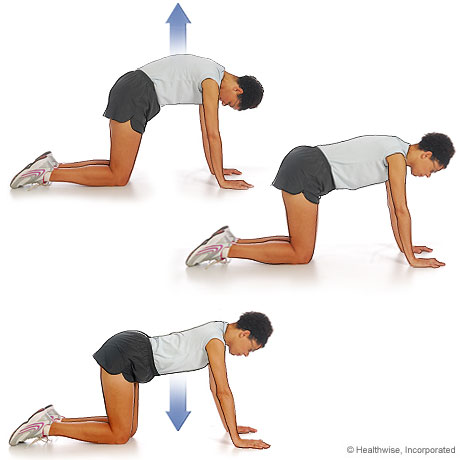Since moving into my new house It seems I have been doing a lot of lifting, painting and just long hours on my feet when I get home. Not being able to come home and really unwind like I used to has lead to a lot of tense muscles and lack of focus on the things that really help with keeping my back pain at bay. For the past week I have been implementing a few different techniques into my morning schedule and within a day I noticed a huge difference. I wanted to give you an update on exactly what I have been doing first thing in the morning to control my pain for the rest of the day.
My daily back pain routine:
I wake up around 5:30-6am and throw on some clothes, grab the dog leash and me and my yellow lab Bentley hit the street for about a 20-30 minute walk. Ill usually listen to a podcast or whatever else to get myself focused on the day. The walk is primarily used to prepare my body and back for the next 30 minutes of my core endurance routine. The walk is huge when it comes to allowing your body to wake up from the time sleeping and work out any kinks or stiffness your mattress or sleeping position may have caused.
As soon as I get back to the house I find the darkest room down stairs and start getting into my routine. I don’t think the room or how dark it is really matters. I just have a hard time focusing on the task at hand so I try to focus my attention on the next few minutes to ensure I do it to the best of my ability. My routine looks something like this.
1) I will lay on my back with my knees bent and my feet together a few inches away from my butt. Ill have my arms stretched out like a cross and i’ll slowly drop both legs to the right then both to the left. Ill repeat this about 8-10 times. The key to doing this is NOT to get a stretch. Your simply trying activate the neuromuscular system. You do NOT want to twist past comfort. All your doing is finding your end range of motion on each side and stopping right before you reach it.
2) Ill hit 8-10 cat camels. The key with these is not to push maximally on the top or bottom position. You’re just taking your back through its full range of motion and just acknowledging proper movement and body mechanics (believe me, small things like this help you focus and notice areas of your core and back that don’t activate like they should.
3) After those are done Ill start to attack my “McGill Big 3”. Right now Im doing the most basic version of each exercise. I have neglected to really focus on the basics and building the proper foundation so I am forcing myself to start from scratch. Even though I have been working out for the majority of my life, I have neglected a lot of areas and I don’t want to skip steps anymore. Ill do the BIG 3 in this order McGill crunch, side planks from knees, bird dogs. Right now I am working through a reverse pyramid of these starting with 8-10. Depending on my progression I will do more to start with and finish around 5 reps being my last set. Remember, the goal isn’t to hold the position for as long as you can. You don’t want to be fatigued. Give your self rest in between and count to 10 seconds for each rep.
4) After the Big 3 I have been hitting soft tissue work and stretching my chest and Psoas (hip flexors). My shoulders are rounded pretty bad from years of training so I really want to try to correct that before I move on. I also spend a large portion of my morning in a seat so I try to get my hips loosened up so they don’t create any habits from my daily sitting routine.
If I could only do one hip flexor stretch for the rest of my life this would be it! What you don’t see here is the corner of the black box is right at my butt. This blocks my body from sliding back while I stretch that leg as far back as I can go before bringing up the other leg.
5) After the chest work ill throw back some coffee and spend the rest of the morning with the family and getting ready to head off to work.
I am currently working through some back pain being caused by soreness every time I train legs. I have found the results from this routine worked the best with complete rest from the gym. Once I feel the inflammation dropping I get back into the training slowly with more attention to my core stability. The only time I feel pain is when my legs get tight from a workout so being sure I have a stable core is a high priority. I have always been one to train through pain and just deal with it later but I am trying to reprogram my mind to only train when I am not in pain. Once the pain comes the focus gets turned to recovery. If I have an acute flare up
I do this routine about 4 days a week. On the other days I still go through the McGill 3 but the walk isn’t done first thing in the am. I am always found that doing this routine first thing in the morning really helps with the pain for the rest of the day. I do highly recommend doing some kind of moderate paced walk before starting the routine. You want your core and spine to be in a good position before you start strengthening and building endurance. you want it to be build on a solid foundation!
I hope this little insight helps!
Try it out and tell me how soon you started seeing results!
William




